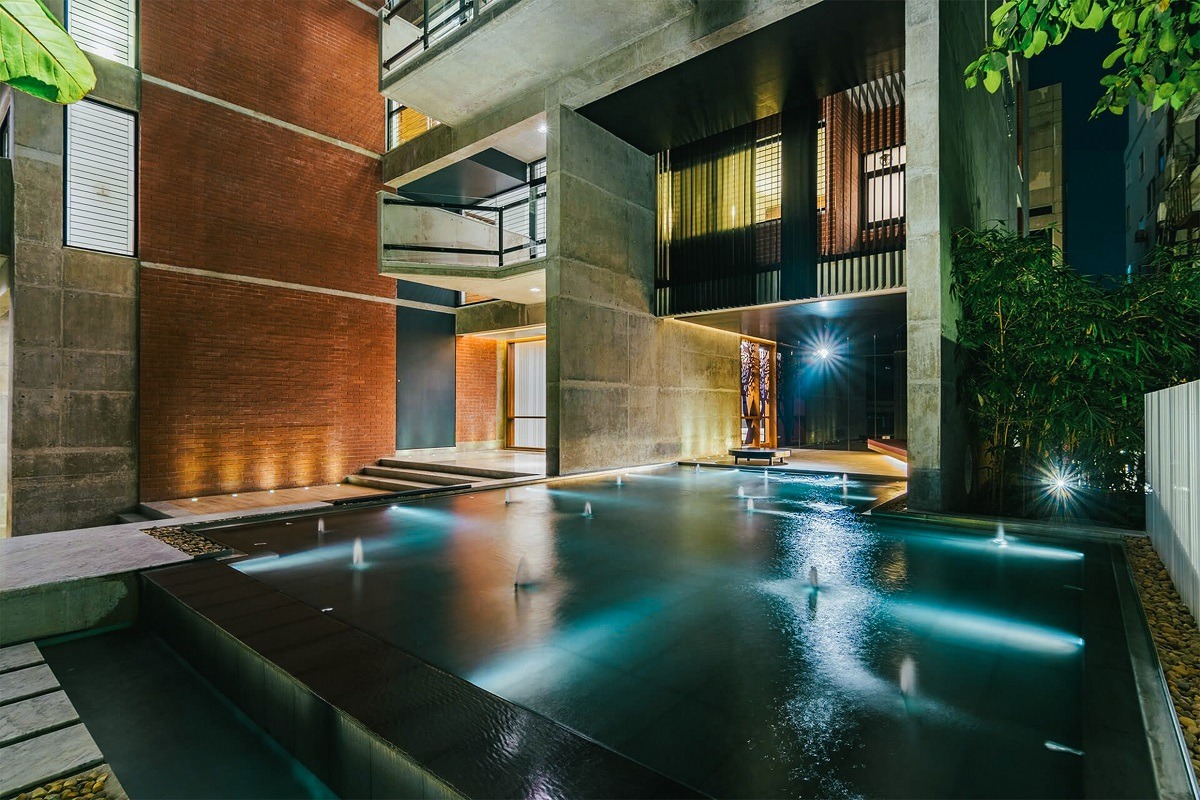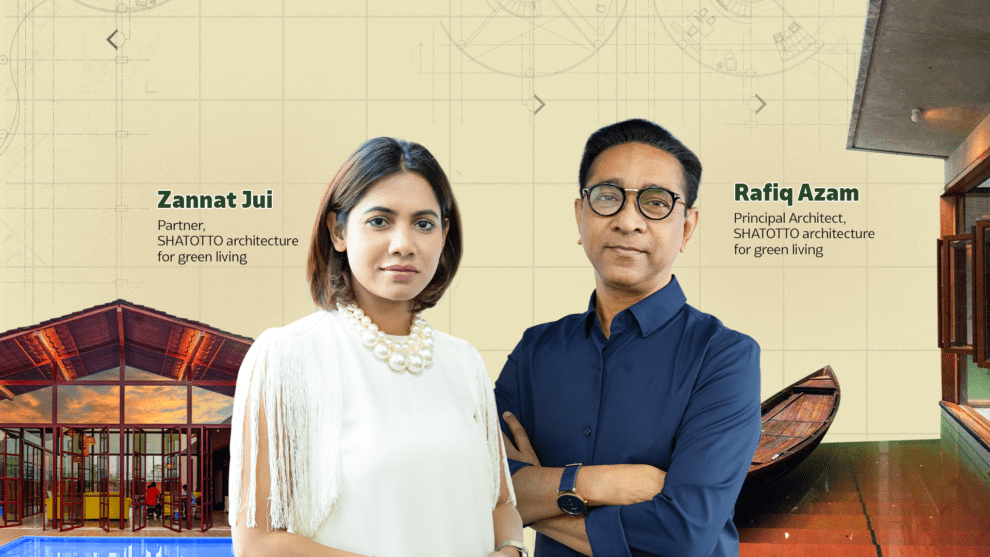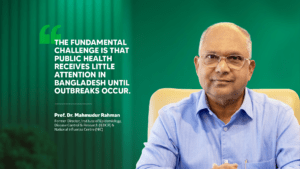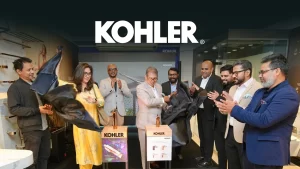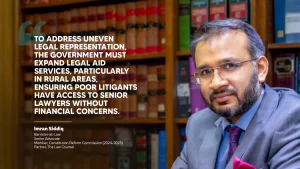1. Let’s start with your individual journeys in the architecture sector and how your personal and professional journey intersected being a couple working together in the architecture field?
Rafiq Azam
My journey into architecture was born from a compromise between my love for painting and my father’s aspirations for me to pursue a more traditional career. Initially enrolled in BUET without a clear understanding of architecture, I clung to the hope that it would somehow embrace my artistic inclinations. Despite my initial confusion and reluctance, my engagement with the subject deepened over time, leading me to a profound appreciation for architecture. My pivot towards green architecture in 1995 predated the green building movement’s rise and stemmed from my artistic sensibilities. Drawing landscapes imbued with nature’s essence, I realized that integrating this natural beauty into my architectural work was not just a preference but a calling. This approach became my signature, merging my identity with green living in architecture. The collaboration with my partner later on not only enriched our personal bond but also deepened our professional ethos, focusing on the calculative and systematic aspects of sustainable design. Despite early struggles and a fear of not succeeding, I dedicated myself to meticulous work and nature inclusion, eventually gaining international recognition through awards. This journey from an uncertain student to an award-winning advocate for green architecture underscores a narrative of growth, passion, and resilience. Besides, as a Professor at BRAC University, I enjoy teaching and find solace amidst the eager minds and academic exploration.
Zannat Jui
My path to architecture was fueled by a desire for challenge and complexity, ignited when I encountered the intricate models of an architecture department’s thesis exhibition at Ahsanullah University of Science and Technology. This moment was a catalyst, compelling me to tackle what I perceived as the discipline’s most formidable aspects. My ambition was not only personal achievement but also contributing to societal improvement. Working separately from Rafiq, who had already established a foothold in green architecture in Bangladesh, I ventured to Singapore to specialize in sustainable architecture. There, my studies echoed the principles Rafiq practiced, though framed within a more systematic and quantitative methodology. This education gave me a new lens through which to view green architecture, emphasizing the importance of measurable sustainability and its communicability to clients. Joining forces with Rafiq, our professional and personal lives intertwined, enhancing our shared commitment to sustainable design. My journey through architecture has been one of continuous learning, discovery, and the pursuit of impactful, environmentally conscious design, deeply influenced by Rafiq’s pioneering work and our collective vision for the future.
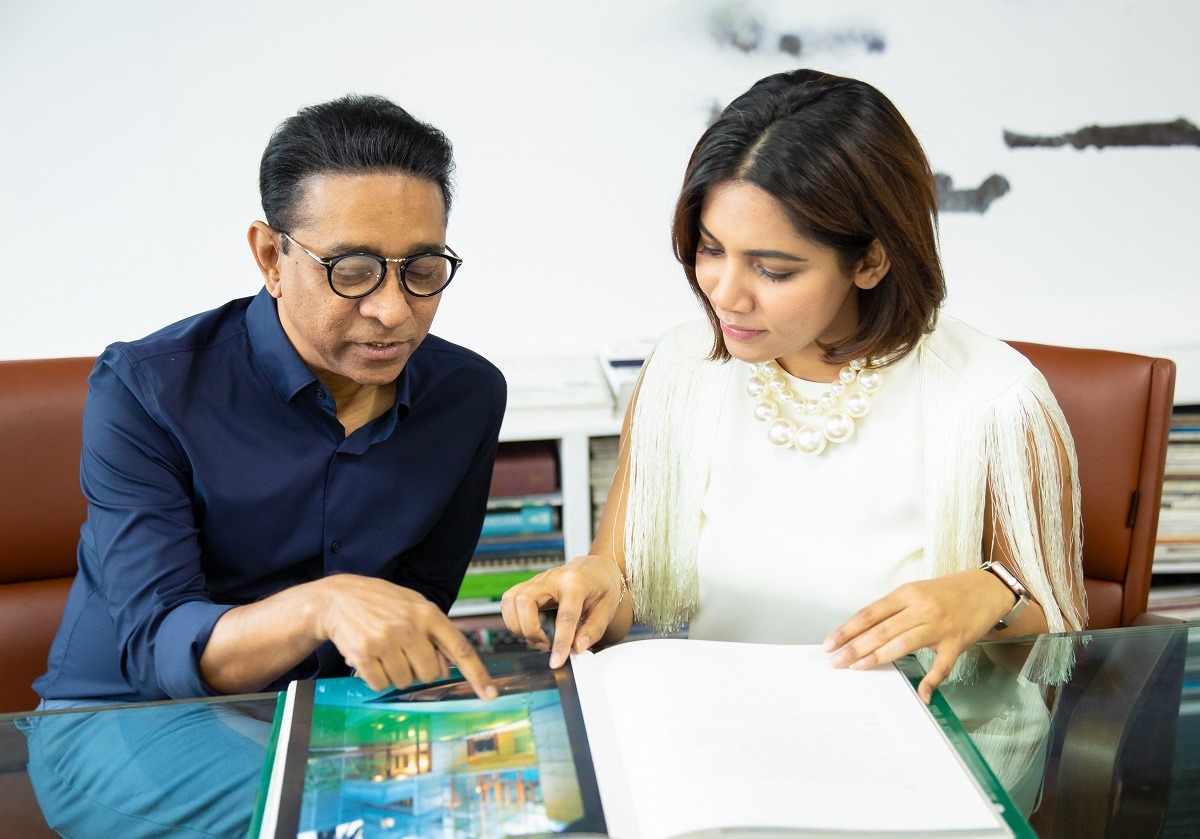
2. Highlight some of the top projects both of you have worked on together and what were the inspirations behind these projects?
Rafiq Azam
Each of our projects is nurtured with the same care and attachment one would devote to their own child. We begin with barren land, a canvas of possibilities, and gradually transform it into a home. The essence of architecture eludes strict definition; it’s a discipline where the architect dabbles in painting without being a painter, engages in construction without being a contractor, and ventures into graphic design without being a graphic designer. An architect embodies versatility, yet their role defies precise categorization, residing in a unique space of creative ambiguity.
Architecture serves as a bridge connecting diverse elements: nature, weather, history, emotions, and physical conditions. It’s this ability to weave together various strands—ranging from the tangible to the intangible—that enriches the architectural fabric. Our approach is deeply rooted in creating these connections, as seen in projects like the Aga Khan Academy. There, we’ve intertwined a millennium of history, emotional narratives, and archeological heritage with the natural world, incorporating indigenous hijol trees to anchor our designs firmly in Bengali culture and literature. This philosophy of connectivity not only makes our work more compelling but also imprints each project with a distinctive identity. As such, every creation holds a special place in our hearts, memorable for its unique story and the myriad connections it fosters.
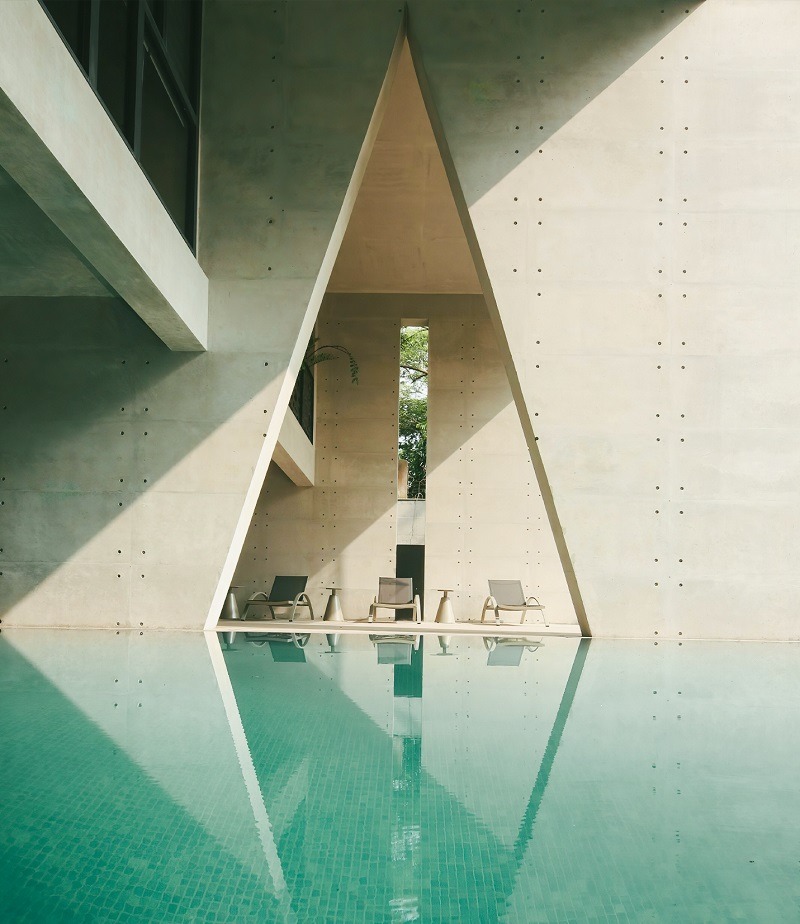
3. Walk us through how you both came to focus on ‘architecture for green living’ and what inspired the establishment of Shatotto as a platform for specializing in sustainable architecture?
Rafiq Azam
During my solo exhibition in 1998 in New York, I was struck by a realization: our architectural education and inspiration were deeply rooted in American and European models, leaving little room for the uniqueness of Bengali culture. This epiphany was both disheartening and motivating. I saw an opportunity to innovate and introduce something novel to the global stage. That’s when I embraced green architecture with a local twist. For instance, instead of conventional swimming pools on rooftops, I designed swimming ponds surrounded by greenery and trees, reminiscent of our village water bodies, complete with seating areas to enjoy nature. Another creation, the ‘Goshsha Ghor’ (Conflict Room), offers a peaceful retreat for cooling down and reconnecting, embodying the Bengali tradition of finding solace in nature to heal and mend relationships. This approach to integrating cultural elements with architecture not only gained international acclaim but also a series of awards. It was through innovation and staying true to our roots that we carved out a sustainable path in the architectural world.
Zannat Jui
Working together, we aim to infuse every project with a global perspective while deeply rooting them in Bengali culture, creating a unique index of features in our work. Our designs include thematic spaces like the ‘rain room,’ ‘sun room,’ and ‘wind room’ – each tailored to enhance the natural elements of rain, sunlight, and breeze, respectively. We meticulously plan the integration of flora to attract birds and butterflies, increasing biodiversity. The ‘wind room,’ for instance, is designed to maximize airflow, providing a natural cooling environment. This collaborative approach not only enriches our projects but also ensures that each one reflects the essence of Bengali culture and biodiversity, making our work distinctive and effective on a global scale.
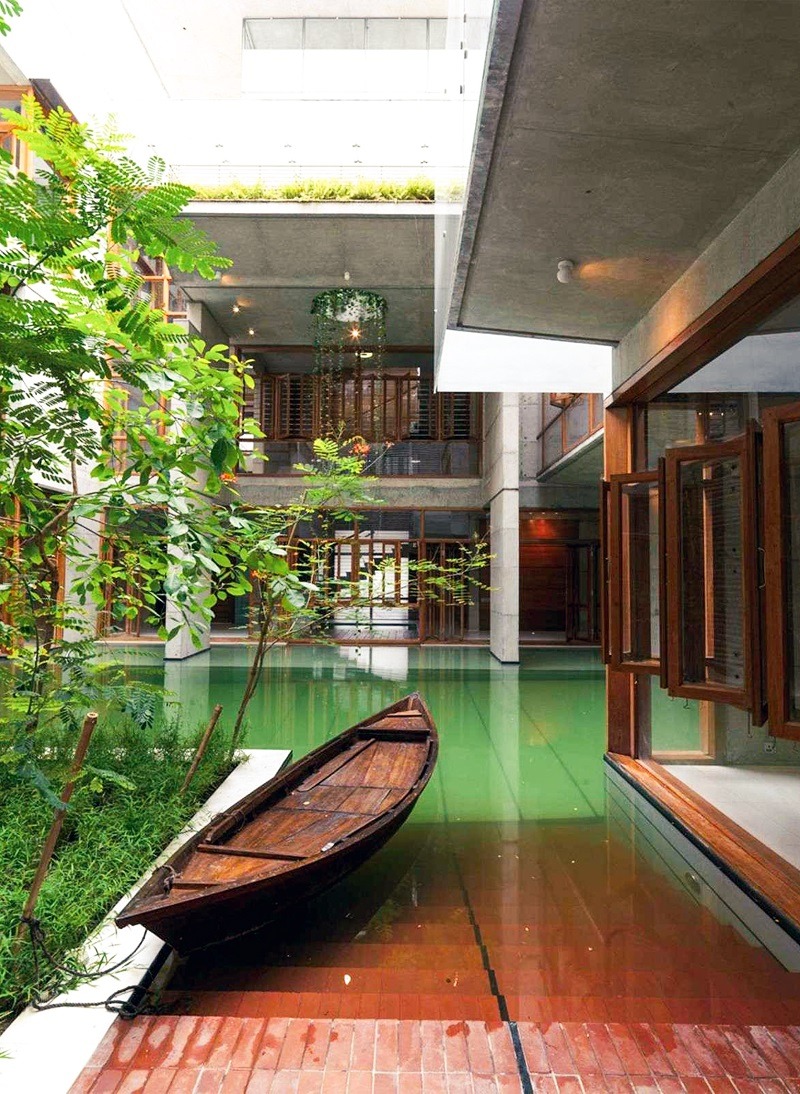
4. Share some of the significant impacts of technology and AI in the field of architecture and how do you incorporate these aspects into your projects.
Zannat Jui
In our journey to embrace modernity within our architectural philosophy, we’ve welcomed the integration of AI and advanced software into our practice. This technological embrace, championed by Rafiq, who pioneered our venture into 3D modeling, is a testament to our commitment to innovation and efficiency. Utilizing technology not only streamlines our processes but also enhances the clarity and comprehensibility of our designs for clients. We’ve hosted numerous training sessions, both in-house and externally, to ensure our team is adept at leveraging these tools. Moreover, we’ve dedicated spaces within our office to foster biodiversity; zones exclusively for trees and birds, untouched by human activity, yet contributing vital oxygen to our environment. This initiative, replicated across every floor, has significantly enriched the biodiversity of our surroundings.
Rafiq Azam
For me, the essence of architecture lies in its connectivity—connecting with nature, with technology, and with people. My affinity for integrating natural elements into our designs, such as trees on every floor of our office, is more than an aesthetic choice; it’s about instilling a sense of wonder and connection to nature in everyone, especially the young. Our office itself is a sanctuary of biodiversity, surrounded by lush greenery we fondly refer to as ‘urban trees.’ We’ve opted for glass boundaries to maintain transparency and openness, allowing the beauty of our ‘green’ initiatives to be visible to all. This approach, which I’ve coined ‘Architecture Based on Trust,’ underscores the importance of trust and respect in everything we do. It signifies a harmonious blend of people, nature, and technology. By harnessing technology, we not only expedite our work but also enhance understanding and efficiency, all while maintaining a deep respect for the natural world that inspires us.
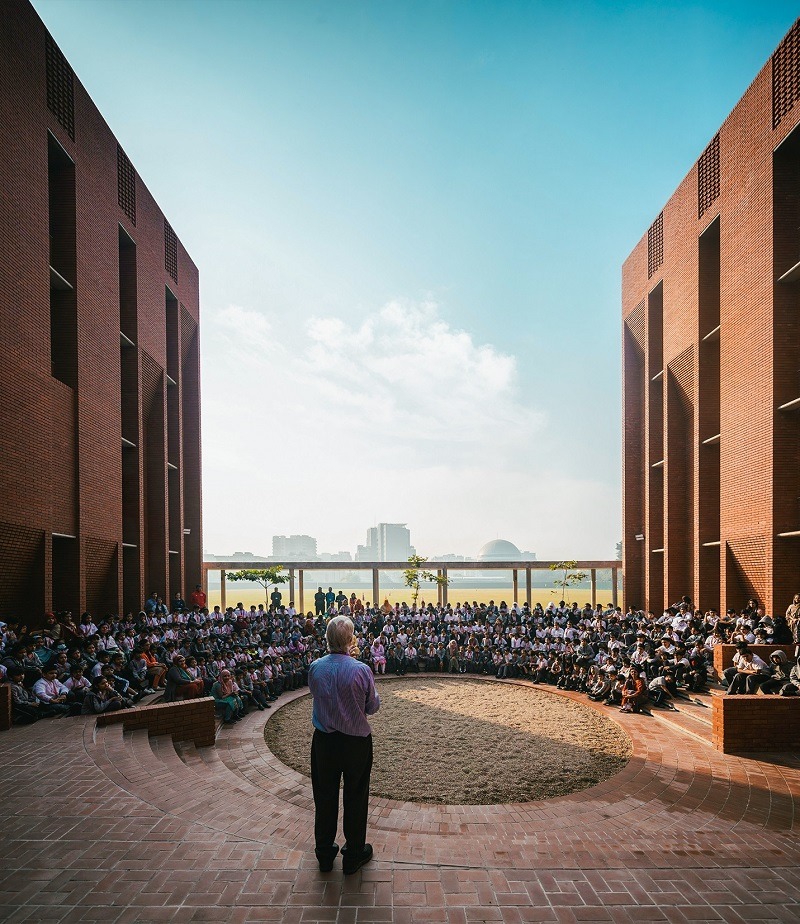
5. Being a couple in the architecture industry, what unique dynamics do you bring to your work at SHATOTTO and how do you leverage each other’s strengths to collaborate effectively on your projects?
Zannat Jui
In our architectural practice, Rafiq and I navigate both individual and collaborative projects, yet no matter the nature of the work, we eagerly share our developments with each other. Whenever Rafiq explores a new concept, he invites me to review his progress, just as I seek his insight on my innovations. While Rafiq is renowned for his signature green architecture, my focus often lies on cost-effective, low-investment projects, each carrying its own distinct language. However, the projects we undertake together carve out a new style altogether, enriching our portfolio’s diversity. Our collaborative spirit extends beyond our partnership, influencing public projects and initiatives in historic districts, embodying a blend of innovation and tradition. Rafiq’s openness to embracing the perspectives of the younger generation has always been a cornerstone of our practice. This mutual respect and understanding not only strengthen our personal bond but also reflect the joy and harmony in our work and life together, navigating stress and sharing triumphs without ever growing weary of one another’s company.
Rafiq Azam
Our diverse array of projects benefits greatly from collaboration, a principle we deeply believe in. Embracing technology and diverse expertise enables us to achieve greater efficiency and excellence in our work. Our mantra, “from Ego to Eco,” encapsulates our approach to eschew pride in favor of ecological and collaborative design principles. Valuing the fresh perspectives of the youth brings a refreshing dynamism to our projects, fostering a culture of continuous learning and innovation. The essence of powerful architecture lies in knowledge and the willingness to explore new ideas.
Understanding and respecting each other’s strengths and viewpoints have elevated our professional partnership to a place of profound impact and significance. We choose to invest our time in happiness and innovation rather than conflict. My wife’s philosophy, viewing every hour spent in disagreement as an hour lost, has reshaped my outlook on life and work. We believe in cultivating happiness through deliberate practice, embracing the responsibility for our own joy. This conviction—that happiness is a choice and a testament to integrity—fuels our approach to both life and architecture, embodying a partnership built on respect, cooperation, and a shared commitment to positive impact.
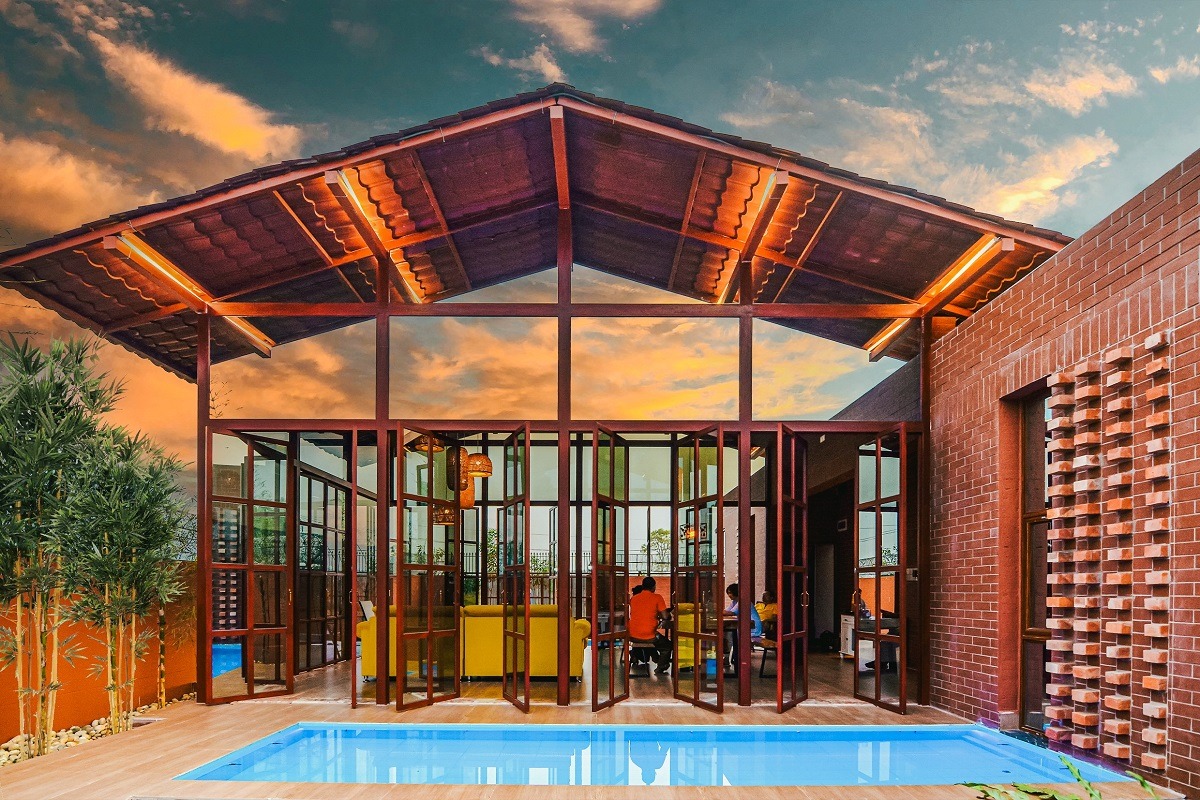
6. What are your thoughts on the current trends and future direction of architecture in Bangladesh, and how do you see your involvement in architectural education and mentorship programs contributing to shaping this direction?
Rafiq Azam
Our disillusionment with the current state of education runs deep, primarily due to pervasive corruption within the system—from the Ministry of Education down to the students themselves. This widespread dishonesty, manifesting in cheating and bribery, undermines the integrity of our educational foundations, producing graduates who, rather than contributing to society, become its burden. Recognizing the gravity of this issue, we’ve established a Foundation aimed at initiating grassroots change. Post-Eid, we plan to engage with the youth in Rajshahi, fostering a culture of integrity and excellence in learning and practice. Our mission is to inspire honesty and creativity in building a better future, encouraging a ripple effect of knowledge and ethical conduct. Despite the challenges, our commitment to conducting business without succumbing to corrupt practices has set us apart, attracting clients who value the unique and principled nature of our work. We believe in starting from the ground up, forming small, integrity-driven groups across Bangladesh to instill the values we stand for.
Zannat Jui
The narrative of the film “12th Fail,” which we recently watched on Netflix, resonates deeply with our experiences, illustrating a systemic failure to instill moral values in students. Rafiq’s stance against bribery mirrors the film’s message that children often grow up without understanding the implications of their actions, viewing mistrust and deceit as norms. In response, we are cultivating a movement of alternative education and support, particularly we are now doing in Rajshahi, to nurture a ‘Bad habit of staying good.’
Our efforts to revitalize 32 parks and playgrounds in Old Dhaka, promoting the slogan ‘Create the Bad Habit of Being Good,’ serve as a testament to this vision. By implementing innovative solutions like a filtration system for clean drinking water, we’ve transformed these spaces into community hubs where children play and learn in a healthy environment, steering clear of substance abuse. The establishment of women’s clubs offers a communal space for conversation and connection, fostering a sense of community and belonging. Through these initiatives, we aim to demonstrate the transformative power of positive habits and community engagement in shaping a more ethical society.
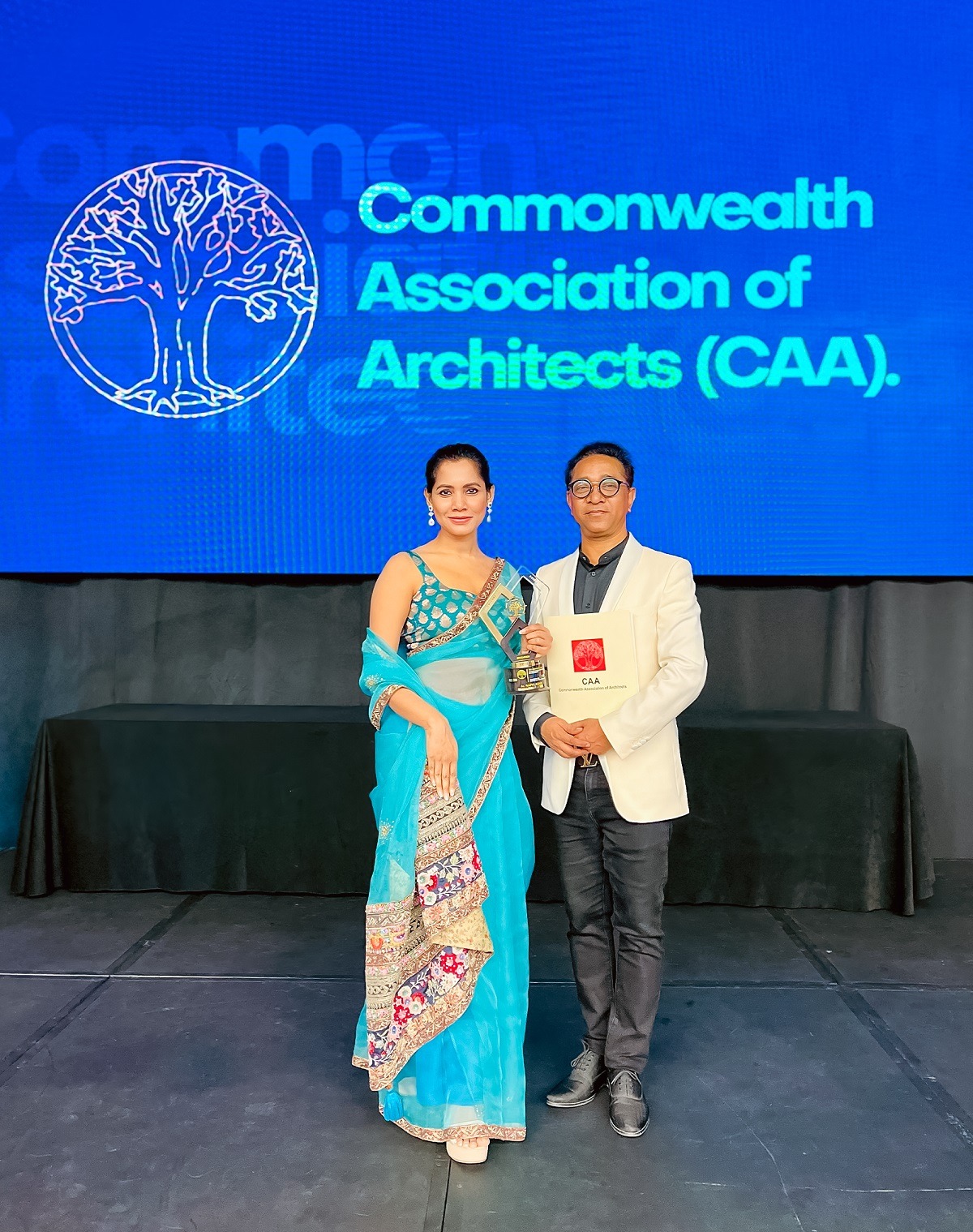
7. What message would you like to share with aspiring architects who wish to pursue a career in the relevant field?
Zannat Jui
Rafiq’s generosity knows no bounds, a quality that has greatly contributed to our success in revitalizing parks and playgrounds, earning us top honors in this endeavor. In an inspiring gesture, Rafiq extended an invitation to the teams that placed second and third, along with seventy young architects, to collaborate with us. This initiative wasn’t just about sharing our achievements; it was a clarion call to the younger generation to join forces for the greater good of our nation. By bringing these individuals into our fold, Rafiq not only recognizes their potential but also fosters a spirit of unity and collective effort towards societal improvement. He strategically allocates projects to ensure that other architects are fairly compensated, embodying his belief that our services should not be reserved solely for the affluent but should also reach the average and underprivileged segments of society. Our commitment to pro bono work is a testament to our dedication to giving back to the community that has given us so much.
Rafiq Azam
At this juncture in my life, I feel a profound sense of responsibility to contribute to my community. By mentoring and uplifting the next generation of architects, I hope to leave a lasting legacy that transcends my own lifetime, ensuring that my contributions are remembered and built upon. Embracing collaboration and focusing our efforts on aiding those in need are core principles of our practice. We hold no grievances, only a deep-seated satisfaction and joy derived from serving the people around us. Recognizing that time is of the essence, we are driven by an urgent need to act, to make a tangible difference in the lives of those we serve. This commitment to societal betterment is not just a professional obligation; it is a personal creed that guides our every endeavor.
